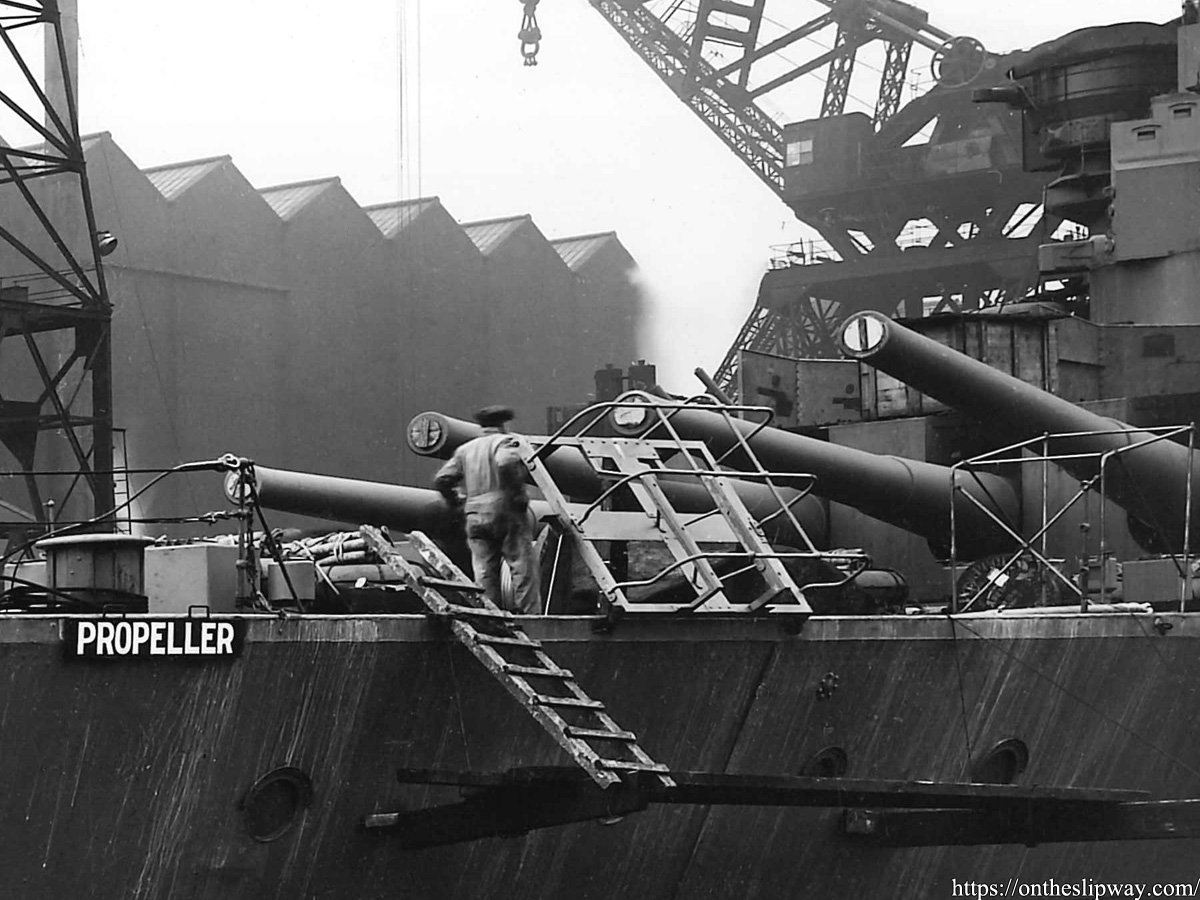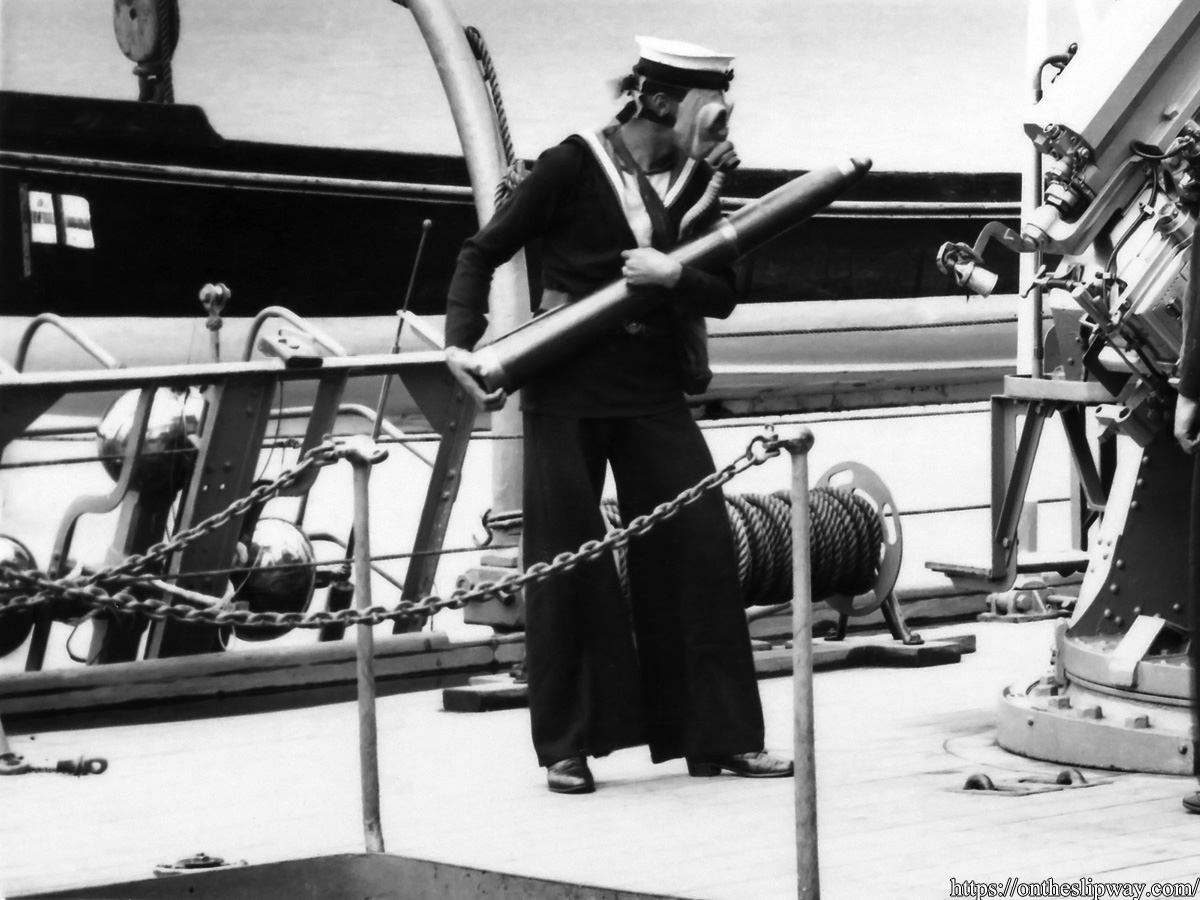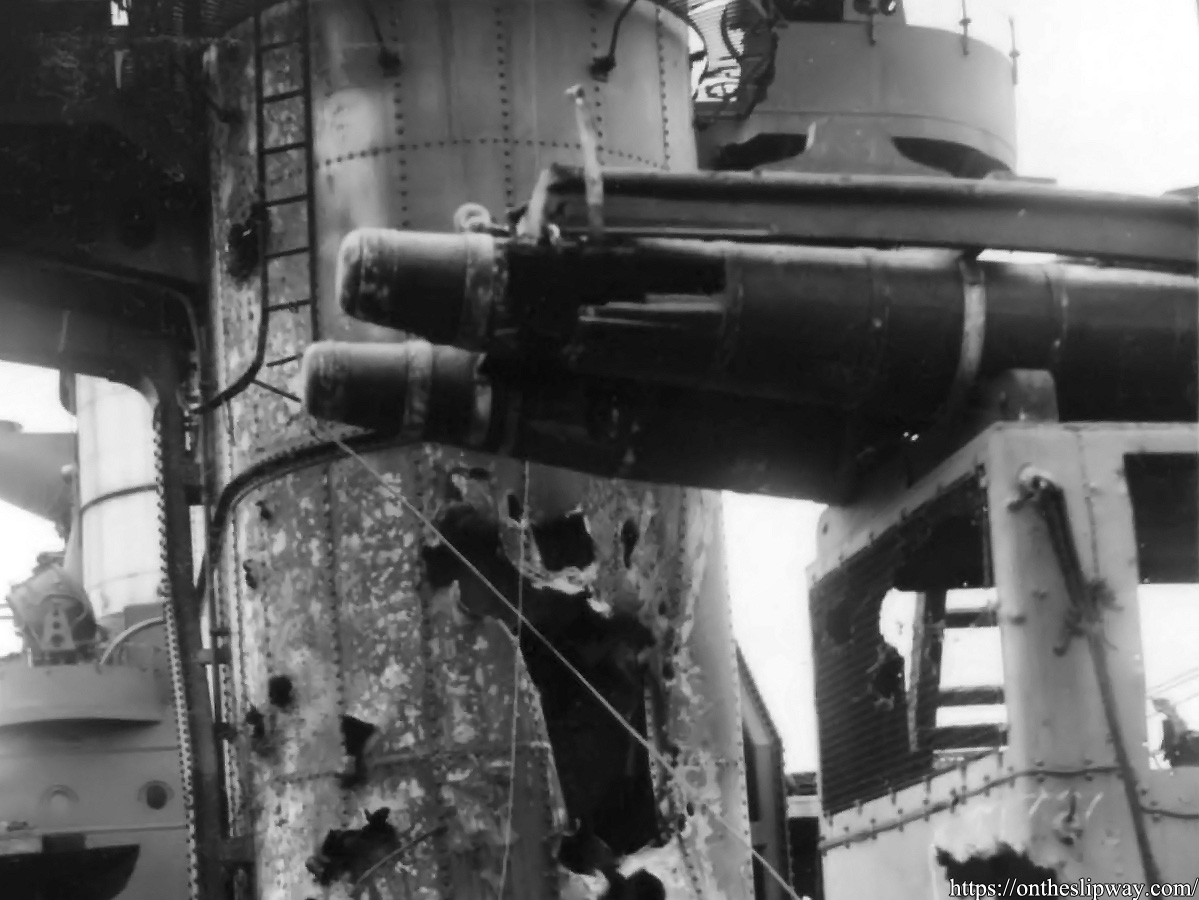When describing the 45 ft motor launch that “42ft motor launch was similar but had only a single rubber, like the 42ft sailing launch from which it was derived. The rubber or rubbing strake is the line at the outside of the hull running the entire length, either a timber of rope. I use Robert’s information to classify all large launches as either 42 or 45 ft.
Category: Boats & Launches
Night Life Buoy
Manual of Seamanship, volume 1: The Night Life Buoy consists of a yellow pine-wood cross with a hollow copper globe at the end of each arm. Galvanised F.S.W. man-ropes are fitted across the arms for holding on by. Two tubes on swivel brackets are secured to two opposite globes, having at the lower end a lead-weighted cylinder into which is placed the calcium light. When not in use the light is sealed by a lid, and an extracting rod passes down the tube and is screwed into a socket on the lid. On being let go, the buoy slides down into the water, the extracting rods remaining behind and, therefore, pull the socket out of the lid of each calcium light this allows the water to enter and ignite the phosphine of calcium, and the smoke and flame come out at the top of the tubes which are kept in an upright position by the lead weight in the bottom of the cylinders. The lights burn for about 30 minutes. Small flags are attached to the tubes to assists seeing the buoy in daylight. A spirit ration and a whistle are carried in the recesses in one of the globes.
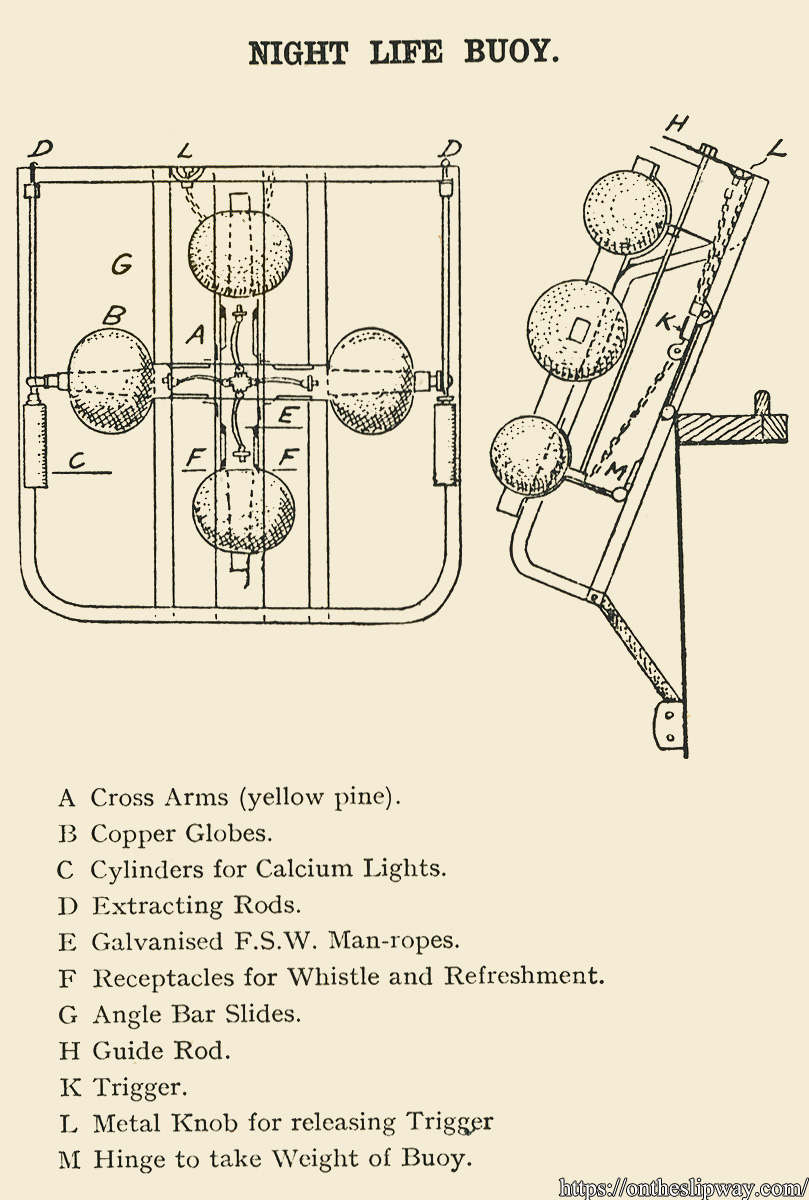
From the Manual of Seamanship, volume 1, 1937
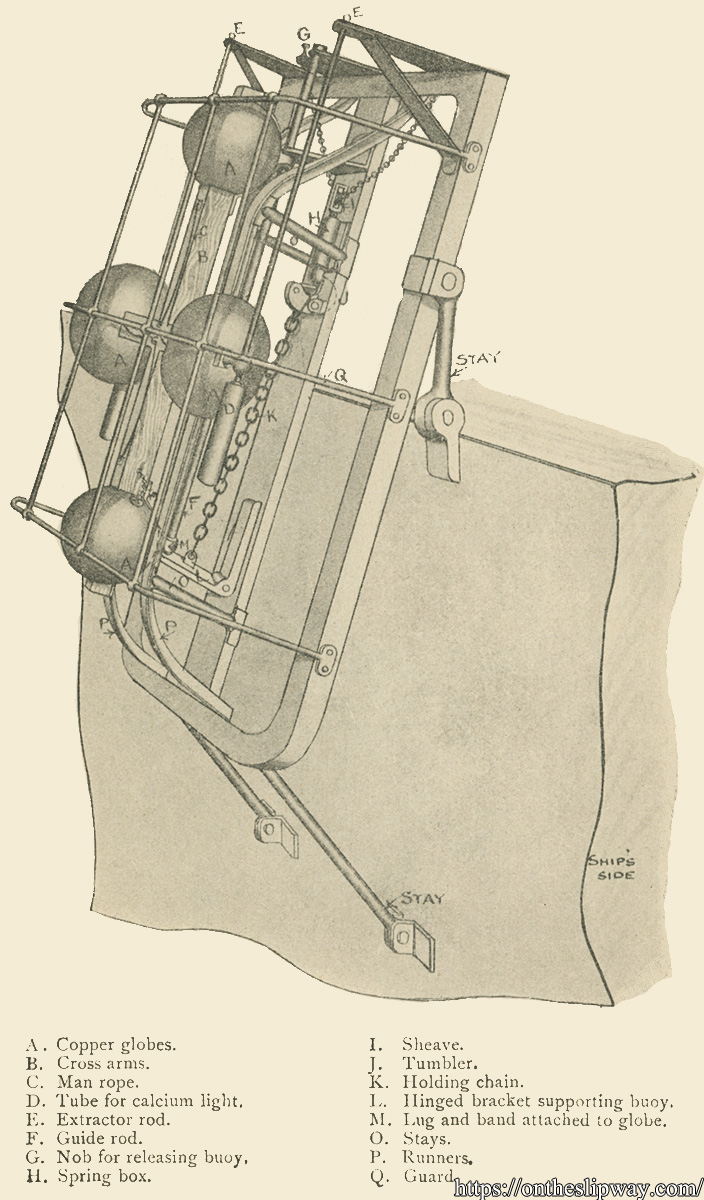
From N.J. McDermaid, Shipyard practice as applied to warship construction, 1911, Longmans, Green, And Co.
The frame of the night life buoy on the stern of HMS Prince of Wales while fitting out; the buoys were removed later, presumably when in drydock for repairs after the battle at the Denmark Straight.
The night life buoy aboard HMS Hood.
Balsa Raft
The Kipling Society: A copper punt was a small raft, often, if not usually, made of balsa wood, in the form of a catamaran, little more than six feet long and about four feet in beam. Originally it had been used by the shipwright, in the days of wooden ships with copper sheathing, which covered the underwater parts of the ship to just above the waterline. After a storm, it was quite usual to find much of the copper peeled off at the waterline, and the shipwright would launch the copper punt, and would go round the waterline, his mouth full of copper tacks, hammering the copper sheets back into place. In the steel navy, the copper punt remained, and was used by the painter to go round the waterline ‘cutting-in’ the boot-topping, i.e., painting the nice straight line that marks the change from the ship’s side grey to the underwater anti-fouling paint. An example of a copper punt can be seen on board HMS Warrior in Portsmouth.
HMS Richmond: The name given to the raft used by the Side party for work about the ship’s water line. The name originates from the days when ships were sheathed with copper, the raft being used by shipwrights for making repairs to the sheathing. The raft is often also called the Balsa Raft since this latter life-saving raft was replaced by Carley Floats.
10 ft or 13.5 ft long
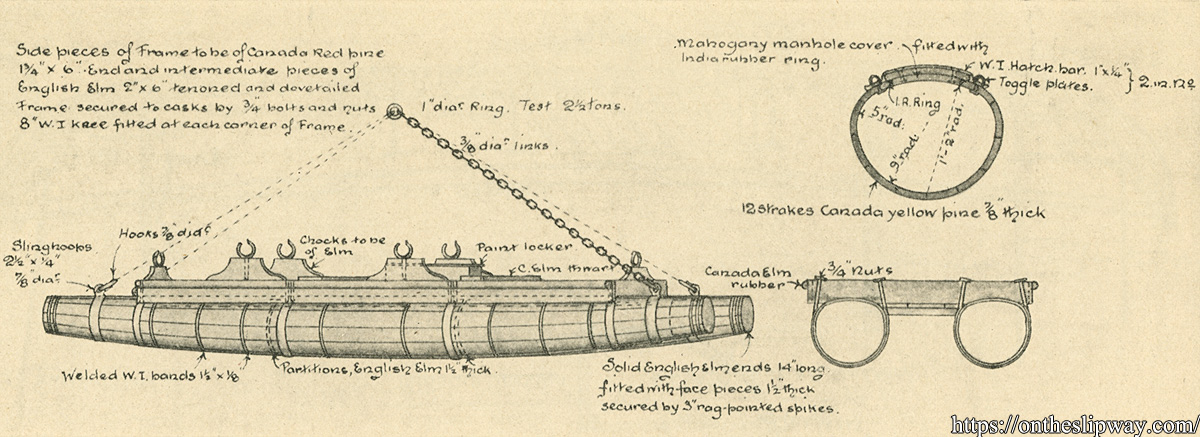
From N.J. McDermaid, Shipyard practice as applied to warship construction, 1911, Longmans, Green, And Co.
A 13.5 ft Balsa raft stored on top of HMS Prince of Wales’ engine room vent, showing damage after the engagement with Bismarck leaving nearly all of the boats damaged or destroyed. Missing (presumed destroyed), 1x45 ft FMB, 1x 27 ft Whaler. Damaged beyond repair: 2x 25 ft FMB. Damaged: 1x45 ft FMB, 1x 25 ft FMB, 1x 30 ft Motor Cutter, 1x 27 ft Whaler, 1x 45 ft Motor Launch (light type) and 2x 14 ft Dinghies.
 THE ROYAL NAVY DURING THE FIRST WORLD WAR © IWM (Q 18011)
THE ROYAL NAVY DURING THE FIRST WORLD WAR © IWM (Q 18011)

